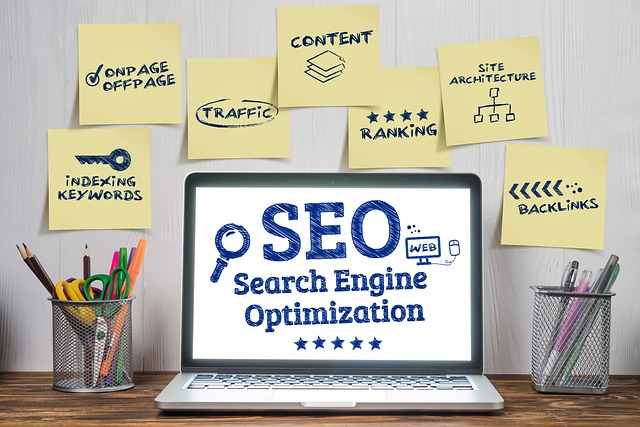When it comes to optimizing your website for search engines, on-page SEO plays a vital role in improving your rankings and driving organic traffic. On-page SEO refers to the optimization of individual web pages to make them more search engine-friendly and provide a better user experience. By implementing the following key on-page SEO factors, you can enhance your website’s visibility and outrank your competitors.
Relevant and Engaging Content
Content is king in the digital realm, and creating high-quality, relevant, and engaging content should be your top priority. Conduct thorough keyword research to understand what your target audience is searching for, and optimize your content accordingly. Ensure that your content is well-structured, easy to read, and provides value to your users. Incorporate your target keywords naturally throughout the content while avoiding keyword stuffing.
Title Tags and Meta Descriptions
Optimizing your title tags and meta descriptions is crucial for both search engine optimization and click-through rates. Craft compelling and descriptive title tags that accurately represent the content of your web page. Include your primary keyword in the title tag and keep it within the recommended character limit. Similarly, write enticing meta descriptions that summarize the page’s content and encourage users to click. Although meta descriptions don’t directly impact rankings, they influence user behavior and can improve your click-through rate.
URL Structure
A clean and user-friendly URL structure contributes to better search engine visibility. Ensure that your URLs are descriptive, concise, and include relevant keywords. Use hyphens to separate words, making them easier to read and understand. Avoid using numbers or random characters in your URLs, as they can confuse both search engines and users.
Heading Tags
Properly structuring your content using heading tags (H1, H2, H3, etc.) is essential for on-page SEO. Heading tags help search engines understand the hierarchical structure of your content and emphasize the importance of different sections. Use your primary keyword in the H1 tag, and incorporate variations of your keyword in subsequent heading tags. This practice not only improves SEO but also enhances the readability and user experience of your content.
Optimized Images
Images not only enhance the visual appeal of your website but also provide an opportunity for optimization. Optimize your images by compressing their file sizes to improve loading speeds. Rename image files with descriptive keywords instead of generic names. Additionally, include alt text for each image, using relevant keywords where appropriate. Alt text helps search engines understand the content of the image and can improve your website’s visibility in image search results.
Read: Best WordPress Speed Optimization Plugins
Internal Linking
Internal linking refers to linking to other pages within your website. It helps search engines discover and navigate your website while establishing a hierarchy of importance for your content. Incorporate relevant internal links within your content to guide users to related information and improve the overall user experience. Ensure that your anchor text is descriptive and includes keywords that accurately represent the linked page.
Mobile Optimization
With the increasing use of mobile devices, optimizing your website for mobile responsiveness is crucial. Mobile optimization not only improves user experience but also plays a significant role in search engine rankings. Ensure that your website is mobile-friendly by using responsive design, which adapts seamlessly to different screen sizes. Test your website on various devices to ensure it provides a smooth and intuitive experience for mobile users.
Page Speed
Page speed is a critical factor in both user experience and search engine rankings. Optimize your website’s loading speed by compressing images, minifying CSS and JavaScript files, and leveraging browser caching. Use tools like Google PageSpeed Insights to identify areas for improvement and implement the necessary optimizations. A fast-loading website not only improves user satisfaction but also encourages search engines to crawl and index your pages more efficiently.
User Experience
Creating a positive user experience is paramount for on-page SEO. Ensure that your website is easy to navigate, with clear menus and intuitive navigation elements. Design your pages with a focus on readability and visual appeal. Improve the overall user experience by providing quick access to relevant information and reducing user frustration. A positive user experience leads to longer page visits, lower bounce rates, and increased chances of conversions.
Read: Importance Of Online Reputation Management For Businesses
Social Sharing Buttons
Incorporating social sharing buttons on your website encourages visitors to share your content on social media platforms. Social sharing signals are becoming increasingly important for search engine rankings. Make it easy for users to share your content by adding prominent social sharing buttons to your pages. This can help increase your content’s visibility, drive more traffic, and potentially earn valuable backlinks.
Read: Best WordPress Development Companies In India
To Conclude
By implementing these key on-page SEO factors, you can optimize your website to rank higher on search engine results pages (SERPs) and attract more organic traffic. Remember to monitor your website’s performance regularly, make adjustments as needed, and stay updated with the latest SEO best practices to maintain your competitive edge in the digital landscape.

